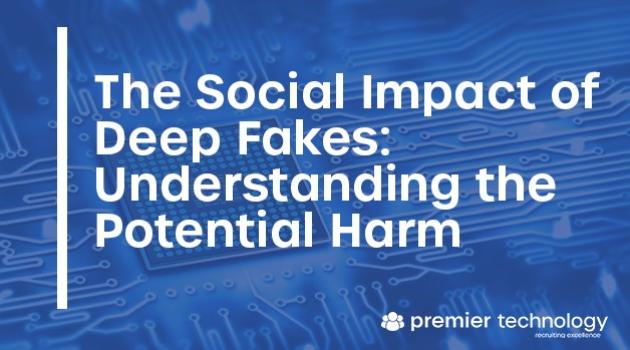Does AI scare you? Hmm, well, what about deepfakes?
One of the most frightening inventions of the digital age is deep fakes, a combination of "deep learning" and "fake". They can create extraordinarily lifelike video footage and audio recordings of humans using cutting-edge machine learning techniques, frequently saying or doing things they have never said or done.
Deepfakes, like any strong technology, have a variety of applications ranging from positive entertainment and art to negative misinformation – and it can be quite scary and hard to tell what is real and what isn’t.
Informational errors and fake news
The use of deepfakes in the area of false information is the most worrying. Imagine a fake video of a politician launching war or a CEO of a significant firm declaring bankruptcy. Such material has the power to influence public opinion, control stock markets, or even cause mayhem in the actual world. Yep, we know!
Assaults on the person and identity theft
Deepfakes can be used as a weapon to impersonate, blackmail, or defame somebody on a personal level. This poses serious risks to personal safety.
Problems with detection
Although there are methods and tools being developed to identify deepfakes, the technology used to produce them is developing more quickly, making it a cat-and-mouse game. The minor differences between a deepfake and a real video are growing more complex.
So, how does the industry mitigate the threat?
Awareness: The first step is raising public awareness of deepfakes' existence and potential risks. Some know about it, but lots don’t. There was a recent example on ITV with Martin Lewis: https://www.youtube.com/watch?v=iV3cD9oYij4
Technology: Support the creation of deepfake detection tools by making investments in them. These tools can be integrated into platforms like social media websites to detect or delete misleading content.
Legislation: To make a distinction between the right to free speech and harmful deception, governments should take into account legislation that criminalizes the malicious creation and dissemination of deepfake information.
Conclusion
Deepfakes are a modern challenge because they mix amazing tech advancements with possible harmful effects on society. To enjoy the benefits and avoid the dangers, we need to understand the impact and act wisely. Just like with past game-changing tech, handling the problems of deepfakes needs awareness, new laws, and further tech solutions.



